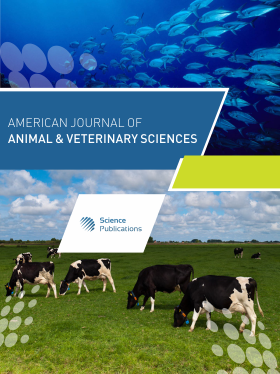Blockade of Group I Metabotropic Glutamate Receptors (mGluRs) Activation Inhibits Nociception Following Descending Colon Distension in Sheep
- 1 Agricultural University in Cracow, Poland
- 2 Hugon Kollataj University of Agriculture in Cracow, Poland
- 3 Warsaw University of Life Sciences-SGGW, Poland
Abstract
Expression of mGluRs of groups I and II was found in structures of CNS closely related with nociception: spinal cord superficial fields, responsible for pain filling or modulation of neurotransmission in the peripheral receptors. The present study examined contribution of mGluRs to the development and maintenance of changes in behavioral and clinical symptoms caused by visceral pain. Experiments were carried out in fourth stages (each of six Polish Merino ewes). Every experiment was performed simultaneously on two fasted animals, which were placed in two individual cages at one-week intervals. Sheep were fitted with a permanent stainless steel cannula in the lateral ventricle of the brain. Blood was collected before and few times after intracerebroventricular (i.c.v.) administration of the mGluR1 antagonist: L-2-Amino-3-phosphonopropionic acid (L-AP3). The L-AP3 was infused at doses: 0.2, 0.4 or 0.8 mg/animal, 10 min before the provoking of visceral pain by distention of Descending Colon (CD) with the rubber balloon of 200 mL water. This data demonstrated that the development and maintenance of the visceral pain symptoms of the CD is dependent on activation of mGluR1 in the CNS and that these receptors play a crucial role in modulating experimental acute visceral pain. The group I of the mGluR antagonist prevent behavioral, clinical and neuroendocrine symptoms of visceral pain. They can be possibly used in cases of acute visceral pain, especially, in combination with opioid agonists. Their simultaneous administration would probably allow minimizing dose of opioids. This knowledge can be also useful in palliative medicine.
DOI: https://doi.org/10.3844/ajavsp.2014.285.293

- 5,836 Views
- 4,825 Downloads
- 0 Citations
Download
Keywords
- L-2-Amino-3-Phosphonopropionic Acid (L-AP3)
- Visceral Pain
- Cortisol
- Catecholamines
- Sheep
